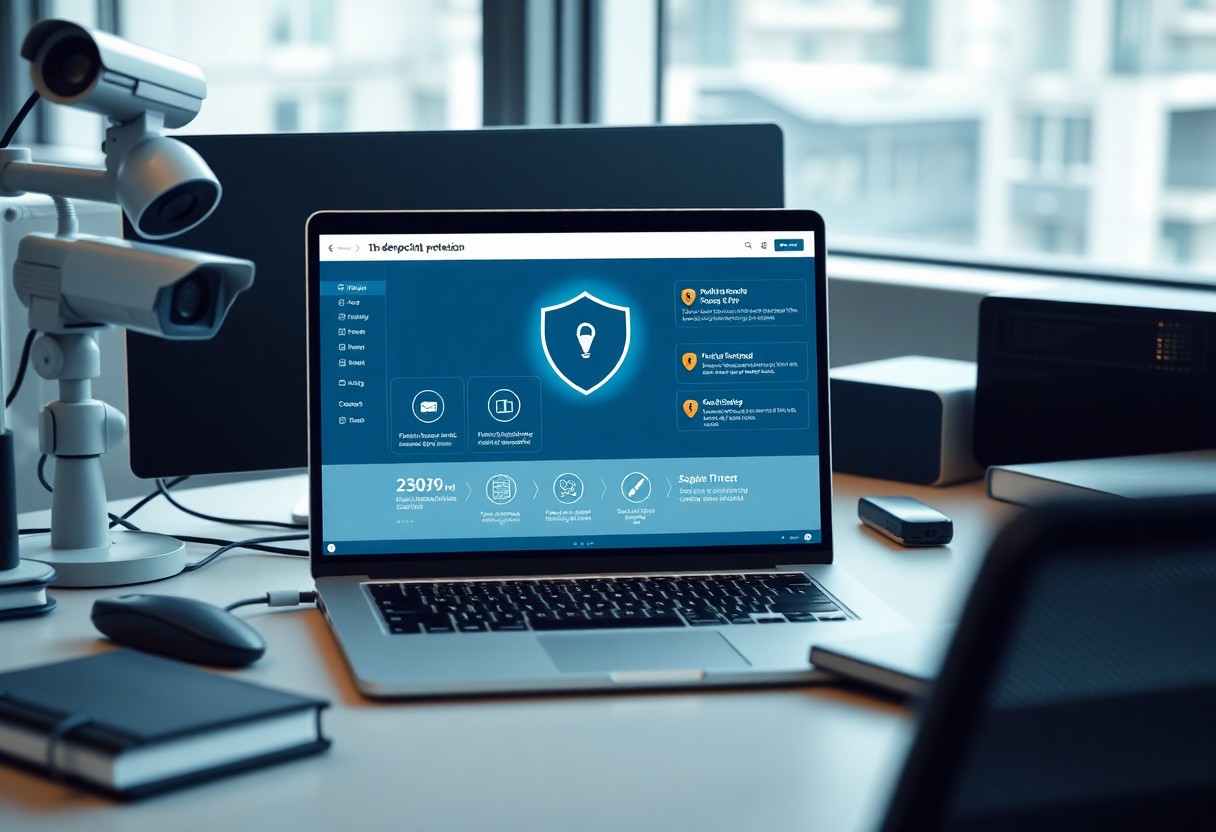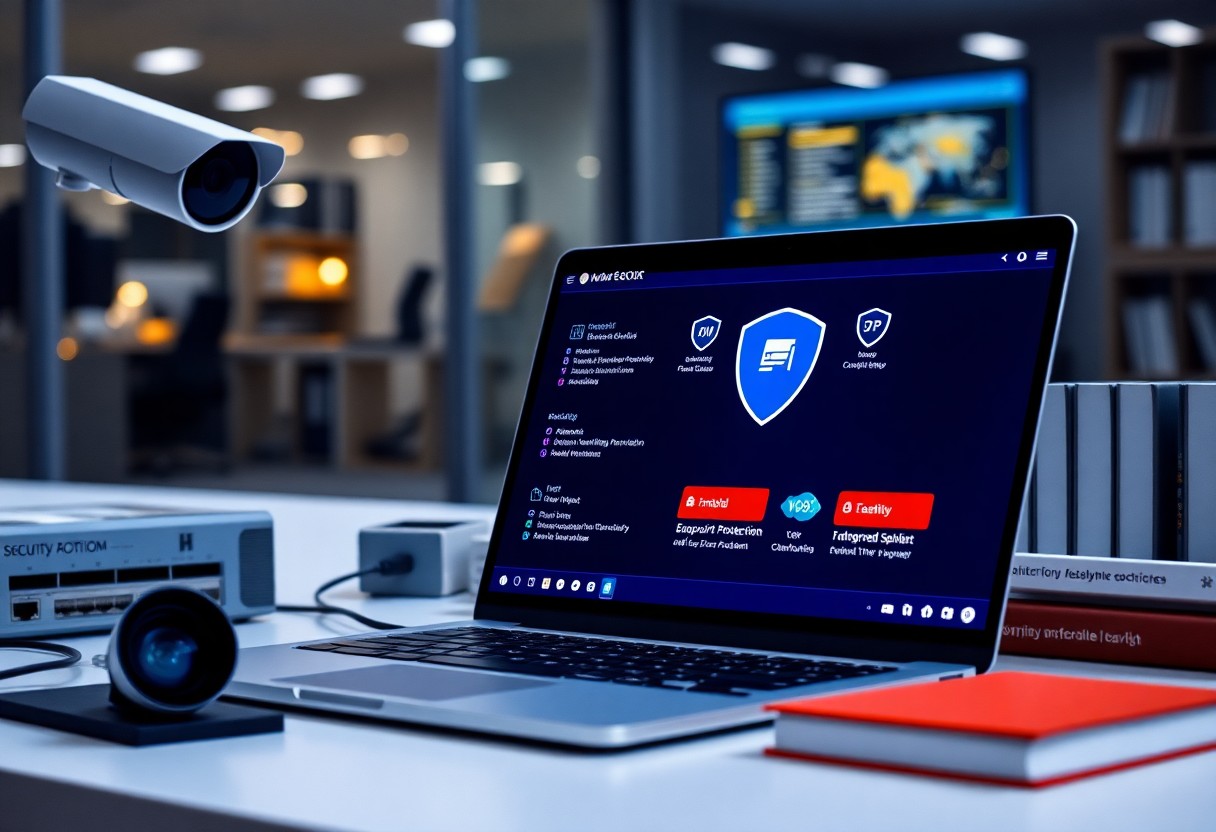The Role Of EDR In Strengthening Your Business’s Cyber Defenses
You rely on robust cybersecurity measures to protect your business from evolving threats, and Endpoint Detection and...

You need to understand that endpoint protection is a vital component of your cyber security strategy. This technology safeguards your devices—like computers, smartphones, and tablets—from threats such as malware, ransomware, and data breaches. As cyber attacks become more sophisticated, implementing effective endpoint protection can help you maintain your organization’s integrity and protect sensitive information. By investing in robust solutions, you effectively reduce vulnerabilities and enhance your overall security posture.

Endpoint protection encompasses a broad range of security measures aimed at safeguarding devices such as laptops, smartphones, and servers from cyber threats. By managing multiple attack vectors, it ensures that the increasing number of endpoints in your organization are adequately protected against malware, unauthorized access, and data breaches. With the rise of remote work and BYOD policies, having a comprehensive endpoint protection strategy is more imperative than ever.
Endpoint protection refers to the strategies and technologies employed to secure endpoints, or user devices, within your network. This encompasses a variety of security activities, including real-time threat detection, prevention mechanisms, and incident response capabilities designed to mitigate the risk of cyber threats targeting these devices.
Essential components of endpoint protection include antivirus software, firewalls, intrusion detection systems, and endpoint detection and response (EDR) solutions. These elements work in tandem to detect, analyze, and respond to security incidents across your network’s endpoints, enhancing your overall cybersecurity posture.
Antivirus software provides the first line of defense by scanning and removing malicious programs. Firewalls act as a barrier between your network and potential threats, filtering out harmful traffic. Intrusion detection systems monitor network activity for suspicious behavior, while EDR solutions offer advanced capabilities such as threat hunting and forensic analysis. Together, these components create a layered security approach, minimizing vulnerabilities and improving response times to potential incidents. Investing in a comprehensive endpoint protection strategy means you’re actively reducing your organizational risk and safeguarding valuable data from sophisticated cyber threats.
Effective endpoint protection is vital for safeguarding sensitive data and maintaining operational integrity. It acts as the first line of defense against cyber threats, allowing businesses to protect their networks from malware and data breaches. By implementing a robust endpoint security strategy, you can mitigate risks and ensure compliance with regulations. For a deeper understanding, explore What is Endpoint Security? How Does It Work?.
The threat landscape is constantly evolving, with cybercriminals employing sophisticated tactics targeting your endpoints. Ransomware, phishing attacks, and zero-day exploits are prevalent, necessitating comprehensive endpoint protection solutions to defend against these vulnerabilities. In 2022 alone, ransomware attacks surged, with a reported increase of 100% compared to the previous year, highlighting the urgency of effective security measures.
Failing to address endpoint vulnerabilities can lead to severe repercussions, including data loss, financial setbacks, and reputational damage. A single breach not only compromises sensitive information but can also disrupt business operations, resulting in significant downtime. The average cost of a data breach has now reached $4.35 million, underscoring the need for proactive security measures.
Every vulnerability exploited by cyber attackers can have far-reaching effects beyond immediate financial costs. For instance, companies may face legal consequences and regulatory fines, especially if they fail to protect personal identifiable information (PII). Damage to your brand reputation can deter customers and partners, potentially leading to lost revenue and trust that takes years to rebuild. Addressing endpoint vulnerabilities is not just about immediate security; it’s about long-term sustainability and credibility in the digital landscape.

Various endpoint protection solutions cater to distinct needs within cyber security. A combination of these solutions can enhance your defense strategy. The following table outlines the primary types of endpoint protection:
| Antivirus Software | Basic protection against malware and viruses. |
| Endpoint Detection and Response (EDR) | Advanced monitoring and remediation for suspicious activities. |
| Mobile Device Management (MDM) | Secures and manages mobile devices used within your organization. |
| Data Loss Prevention (DLP) | Prevents sensitive data breaches and exfiltration. |
| Application Whitelisting | Restricts software installations to known, trusted applications. |
Any effective strategy utilizes a blend of these solutions for comprehensive endpoint protection.
Antivirus software serves as the first line of defense against malware attacks. By regularly scanning systems for known threats, it helps eliminate viruses and malicious software before they can inflict harm. Real-time protection features allow your defenses to remain vigilant against new threats, keeping your endpoint security robust and responsive.
EDR solutions actively monitor endpoints for suspicious activities, enabling rapid detection and response to potential threats. By analyzing behavioral patterns and using threat intelligence, EDR can identify advanced threats that traditional antivirus software might miss.
With EDR, you gain deeper visibility into your network, allowing for the identification of anomalies and the context around incidents. Continuous monitoring provides real-time alerts, giving your security team the chance to respond quickly to threats. The ability to investigate incidents thoroughly is enhanced through EDR’s rich data collection, enabling better threat hunting and post-incident analysis. Together, these capabilities fortify your endpoint security posture against evolving cyber threats.
Developing a robust endpoint protection strategy involves assessing your existing security measures and identifying vulnerabilities within your network. You should start by defining your endpoints, which include laptops, mobile devices, and servers, then evaluate the specific risks associated with each. Consider integrating advanced solutions like EDR (Endpoint Detection and Response) and leveraging features like automation to enhance your defense. For a deeper understanding of these strategies, check out What is Cyber Security Endpoint Protection?.
Deploying endpoint protection effectively involves ensuring that all devices are covered under a unified security policy. You need to conduct regular vulnerability assessments and prioritize patch management to mitigate potential threats. Employing a layered defense strategy, which includes firewalls, antivirus software, and user education, further strengthens your posture. Make configuration settings consistent across devices to avoid security gaps.
Consistent monitoring and timely updates are non-negotiable for maintaining security. You should implement real-time alerts for suspicious activity to enable rapid response to potential threats. Regularly updating your endpoint protection software ensures you’re shielded against newly discovered vulnerabilities and exploits. This proactive approach helps in mitigating risks before they escalate into larger security incidents.
Establishing a routine for continuous monitoring and updates can make a significant difference in your endpoint security posture. You might consider utilizing automated tools that provide 24/7 oversight of your endpoints, enabling you to react swiftly to security breaches. Staying informed about the latest threats through threat intelligence feeds allows you to adjust your defenses accordingly, ensuring that your endpoints are always fortified against emerging risks.
Managing endpoint protection presents several challenges, particularly regarding resource allocation, user education, and maintaining updated defenses against an array of sophisticated attacks. Organizations often grapple with ensuring all devices are consistently monitored and protected, especially in environments with a growing number of remote and personal devices accessing corporate networks. Balancing security measures with user convenience further complicates the implementation of effective endpoint protection strategies.
The landscape of cyber threats is continuously changing, with attackers leveraging advanced techniques such as artificial intelligence and machine learning to evade traditional security measures. Phishing schemes, ransomware, and supply chain attacks have become more frequent and sophisticated, making it imperative for you to stay proactive in updating your endpoint protection measures. These evolving threats demand adaptive security solutions capable of responding in real-time.
Navigating compliance and regulatory issues can pose significant obstacles for your endpoint protection strategy. Organizations must adhere to various standards such as GDPR, HIPAA, and PCI DSS, which mandate strict controls over data security and privacy. Failure to comply not only risks hefty fines but can also result in reputational damage. Regular audits and staying informed about changes to these regulations are important for maintaining compliance and ensuring your endpoint protection measures align with legal requirements.
The complexities surrounding compliance extend to various industries, each with specific regulatory frameworks dictating security practices. For instance, the healthcare sector’s HIPAA mandates that all healthcare providers must implement necessary safeguards to protect patient data. In contrast, financial institutions face stringent regulations under the PCI DSS for processing credit card information. By prioritizing compliance within your endpoint protection strategy, you can mitigate the risk of violations while fostering trust among clients and stakeholders. Investing in comprehensive training programs and robust security solutions not only helps in adhering to these requirements but also enriches your overall security posture.

As cyber threats evolve, so too will endpoint protection strategies. Future trends indicate a stronger emphasis on automation and real-time analytics, enabling organizations to respond more quickly to emerging threats. The integration of advanced behavioral analysis will also shape how endpoints are monitored, shifting the focus from traditional signature-based detection to more proactive, intelligence-driven defenses.
AI and machine learning will play transformative roles in endpoint protection, allowing for smarter threat detection and response. By analyzing vast amounts of data, these technologies can identify anomalies and adapt to new threats in real-time, reducing response times significantly. This capability helps you protect endpoints from increasingly sophisticated attacks, ensuring more robust security measures.
Zero Trust architectures are gaining traction as organizations adopt a more stringent security posture. This model operates on the principle of “never trust, always verify,” meaning you should not assume any user or device is trustworthy, regardless of its location within or outside the network. By implementing stringent access controls and continuously validating user identities, your organization can greatly reduce attack surfaces and limit potential breaches.
The rise of Zero Trust architectures aligns with the growing complexity of cyber threats and the increasing sophistication of attackers. Organizations implementing this model utilize advanced authentication methods, granular access controls, and continuous monitoring to validate user activity. This approach is evident in sectors like finance and healthcare, where regulatory compliance demands stringent security measures. As you consider adopting Zero Trust, expect investments in identity management solutions and enhanced network visibility to become integral to your endpoint protection strategy.
From above, you can see that endpoint protection serves as a vital defense mechanism in your cybersecurity strategy. It safeguards your devices from various threats, ensuring the integrity of your data and networks. In today’s digital landscape, where cyberattacks are increasingly sophisticated, adopting a robust endpoint protection solution is imperative for maintaining your organization’s security posture. By investing in effective endpoint protection, you empower yourself to proactively address vulnerabilities and mitigate potential risks before they escalate into significant breaches.
A: Endpoint protection is a security solution designed to protect endpoints or devices such as computers, smartphones, and tablets from cyber threats. It typically includes antivirus software, anti-malware, firewall protections, and intrusion prevention systems, ensuring that threats are blocked at the device level before they reach the network.
A: Endpoint protection is important for organizations because endpoints are often the target of cyber attacks. Without proper security measures in place, devices can be compromised, leading to data breaches, financial losses, and damage to reputation. A robust endpoint protection strategy helps to mitigate these risks by safeguarding sensitive information and ensuring compliance with industry regulations.
A: Effective endpoint protection solutions typically include features such as real-time threat detection, automated response mechanisms, centralized management consoles, data encryption, and regular updates to threat databases. They also often provide tools for incident response and forensic analysis to help organizations understand and recover from security incidents.
You rely on robust cybersecurity measures to protect your business from evolving threats, and Endpoint Detection and...
Endpoint security has become a top priority for organizations and individuals alike as cyber threats evolve and become...